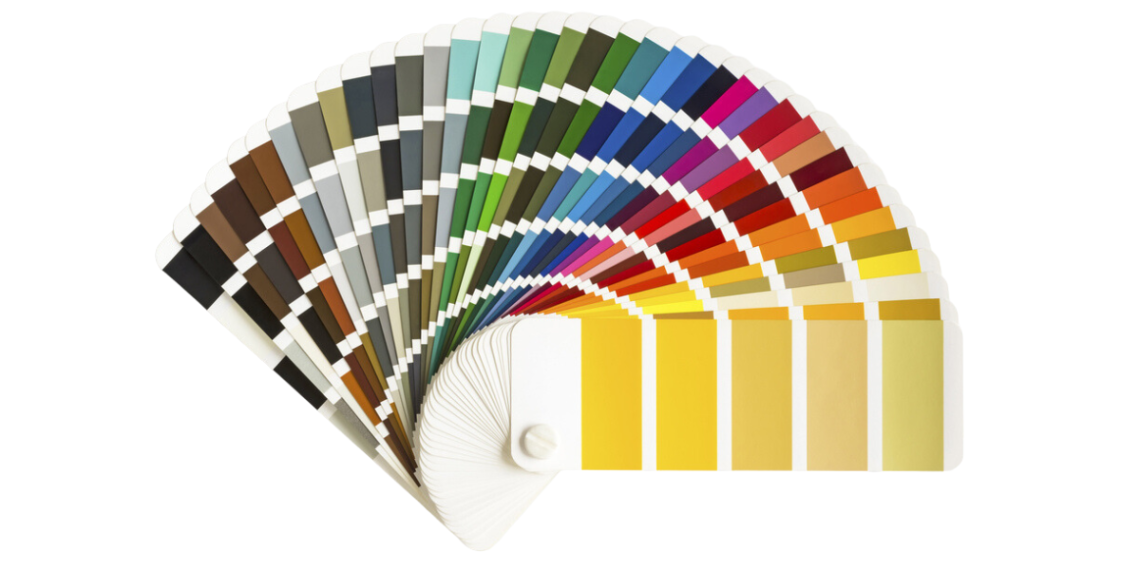Creating a beautiful and inviting home is a goal that many of us strive for. In our quest for interior design excellence, we want a space that not only reflects our personal style but also stays on top of the latest design trends. Unsurprisingly, one of the key elements that can transform the look and feel of any room in an instant is the colours and shades that we incorporate into our home space.
In this article, we’ll explore seven colours and shades that are currently trending in the world of interior design. So what are you waiting for? Read on to find out more.
1. Blush Pink
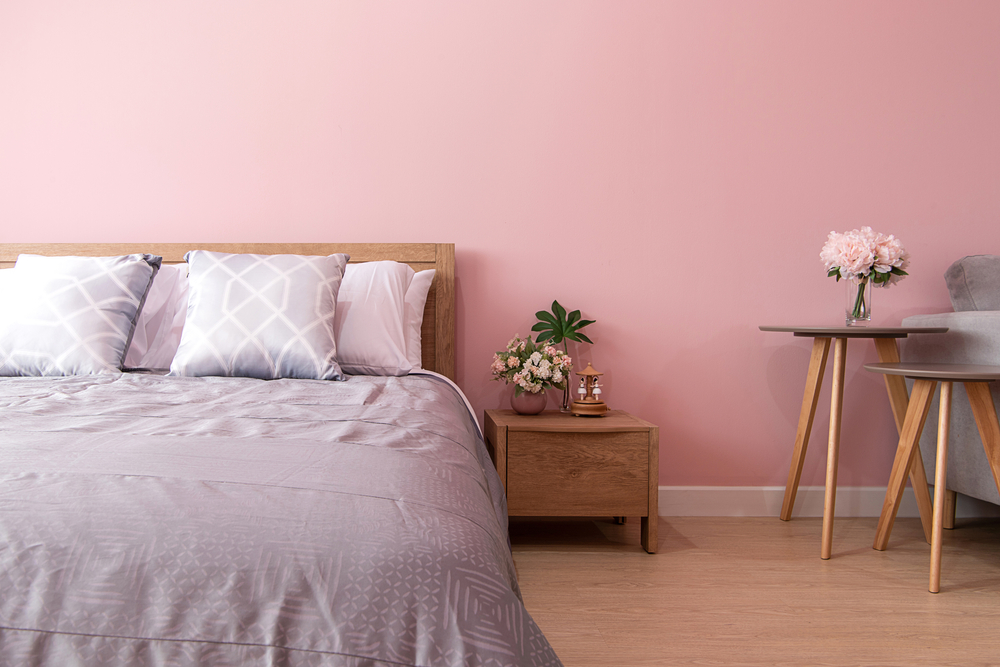
Contrary to popular belief, blush pink doesn’t just have to be a colour that you use in nurseries or the bedrooms of tween girls. And truth be told, this versatile colour has actually transcended its association with traditional femininity and has become a go-to choice for both contemporary and classic interior designs. Blush or baby pink as a shade evokes a sense of softness, tranquillity, and sophistication, making it an excellent option for creating an inviting and serene atmosphere in any room.
You can introduce blush pink through upholstery, pink curtains, rugs, or other similar soft elements in your space. To create a more dynamic and contemporary aesthetic, consider pairing this hue with contrasting colours. For instance, combining blush pink with deep navy blue or charcoal grey can help to create a striking visual impact and add a modern twist to traditional colour palettes that may have used pink as a symbol of femininity.
Whether used as a primary colour in your design or as an accent, blush pink will be sure to add an effortless touch of warmth and elegance to your home design.
2. Emerald Green
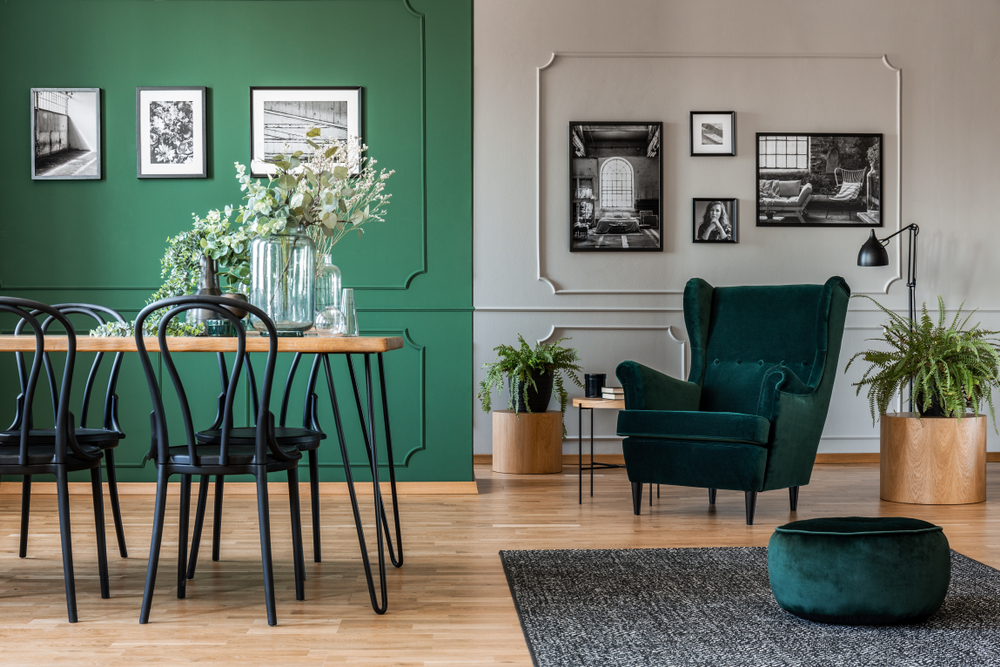
If you’re looking to curate a space that exudes elegance and regality, look no further than the timeless shade that is emerald green. Inspired by the precious gemstone from which it takes its name, emerald green exudes a sense of luxury, opulence, and natural beauty. One of the defining characteristics of emerald green is its signature boldness and depth — this jewel-toned hue has a captivating intensity that immediately draws the eye and adds a sense of drama to any interior space.
According to Luxury Residential Interior Design professionals, emerald green works exceptionally well as both a wall and accent colour, allowing you to infuse your interiors with vibrant energy without overpowering other elements in the space. You can even incorporate emerald green into your home space by introducing furniture or decor items.
You may even decide to pair your emerald green elements with some metallic accents like gold or brass. The deep green will provide a regal backdrop upon which your metallic accents can really glimmer and pop. Incorporating these metallic elements through lighting fixtures, decorative accessories, or even furniture legs can also add a touch of glamour and refinement to any home space.
3. Sage Green
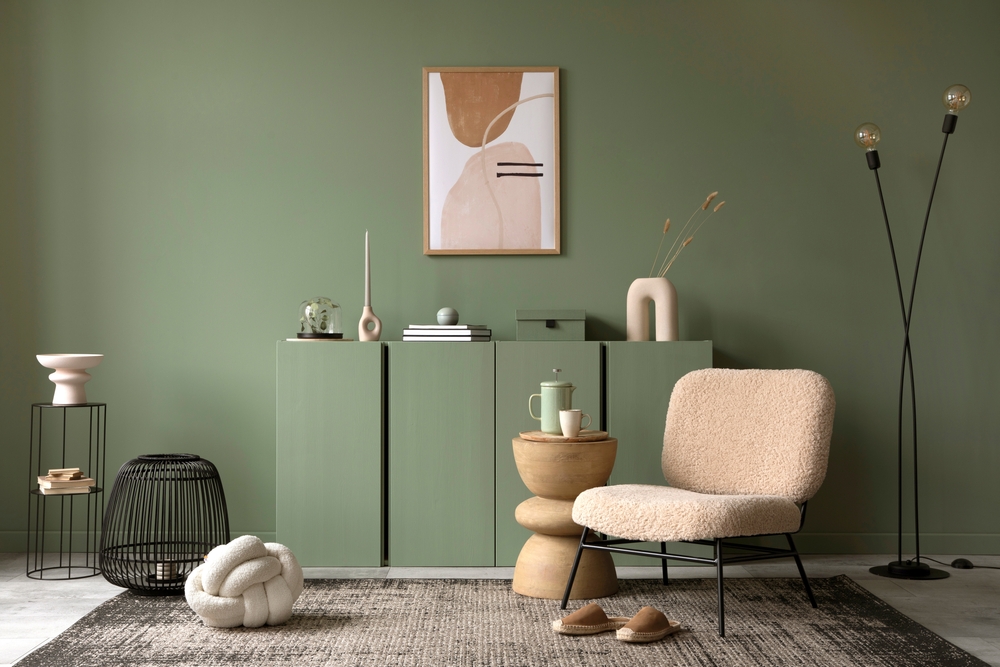
This next shade of green is reminiscent of the grey-green leaves of the sage plant, and has gained significant popularity in home design for its soothing and calming qualities. Sage green offers great versatility as a muted shade. You can basically pair this sagey shade with a variety of design styles, from minimalist, to traditional and contemporary. Its understated elegance and neutral undertones make it an ideal choice for creating serene and balanced interiors.
Those who have an affinity for biophilic or nature-inspired design will absolutely adore how safe green pairs with other earthy and neutral tones – think warm browns, soft creams, and natural beiges. The combination of sage green with these earthy hues can add a natural depth and richness to your interiors.
In addition to earthy tones, sage green can also be paired with cooler shades to create a fresh and contemporary aesthetic. You can combine sage green with crisp whites or cool greys to curate clean and modern interiors that align with minimalist or Scandinavian-inspired design styles.
When it comes to incorporating this colour into your home design, there are plenty of options and ideas to explore. You can opt for sage green walls to establish a peaceful backdrop, or you may even decide to introduce sage green through furniture pieces, upholstery, or draperies, adding subtle pops of colour that contribute to the overall soothing ambience. Another popular way to incorporate sage green is through natural elements like indoor plants and botanical prints. Pairing sage green walls or upholstery with lush greenery creates a seamless connection to nature, bringing the outdoors in!
4. Terracotta
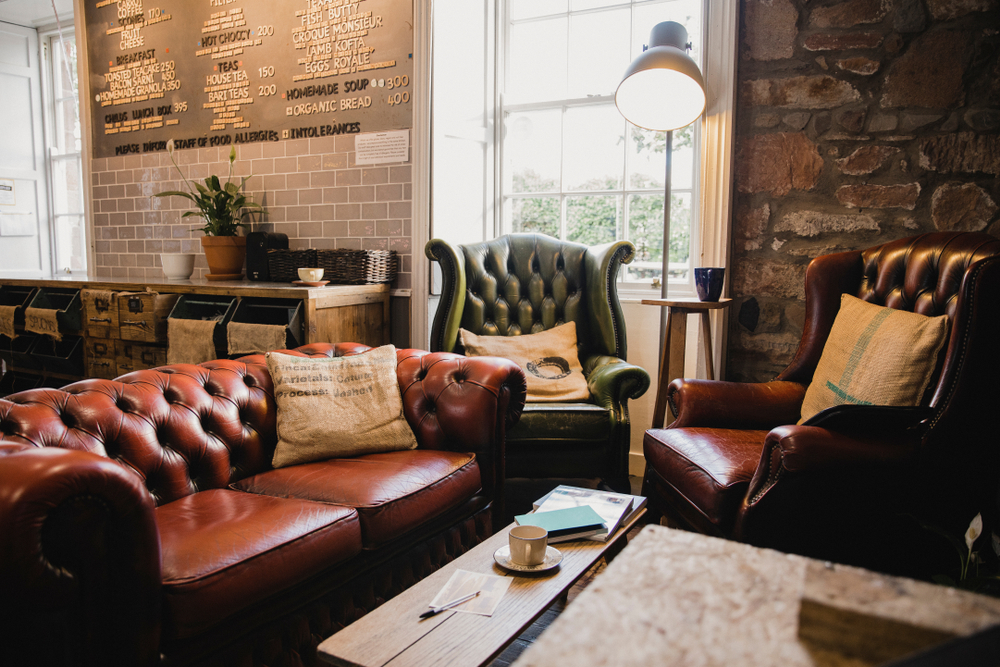
A rich, warm and earthy tone, terracotta has experienced a resurgence in popularity in home design and we couldn’t be more thrilled. This earthy hue is renowned for being incredibly versatile and can tie together a wide variety of interiors, ranging from barnyard rustic to Mediterranean-inspired aesthetics.
To create a vibrant and eclectic ambience, consider pairing terracotta with other, equally bold colours. We recommend trying deep blues, vibrant greens, or even golden yellows for a touch of extra warmth and light.
You may also opt to incorporate terracotta as a material alongside using this particular shade of rich and earthy red-brown. Adding terracotta tiling or even pots and vases can help bring some vibrant life to your interiors. Terracotta can be a particularly popular colour choice in kitchens, living rooms, and entryways, as this shade can add a touch of warmth to these hearth-like spaces in your home.
5. Charcoal Grey
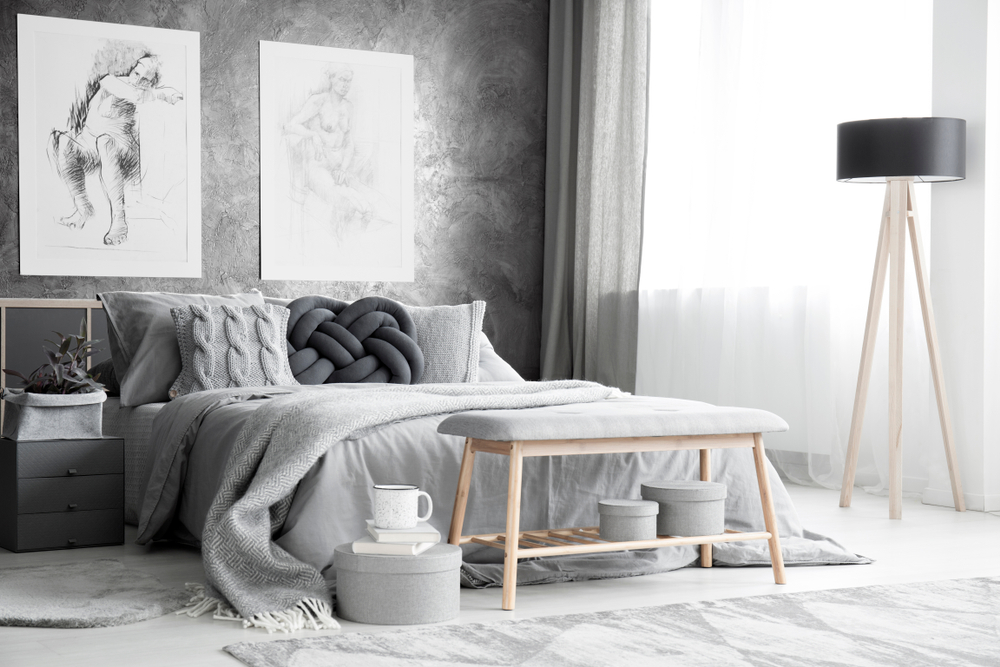
Known for its depth and complexity, charcoal grey offers a darker and more dramatic alternative to traditional neutral or muted grey tones. Unlike charcoal grey, neutral and lighter greys can often lack cooler undercurrents of blue, green, and purple. And you’d be surprised by just how much you can do with these cool-toned undercurrents! When complemented by other cool tones and perhaps even some warm accents, charcoal greys can exhibit a captivating visual effect that evolves depending on lighting conditions.
When used as a wall colour, charcoal grey creates a striking and almost metamorphic backdrop that sets the stage for other elements in the room to spring to life. It has the ability to enhance artwork, furniture, and decorative accessories, making them stand out and adding a sense of depth to the overall design.
This deep grey hue also has a way of absorbing light, creating a cocooning effect that can be particularly useful for those looking to create intimate and inviting spaces that still feel refined. To create a harmonious balance, consider incorporating crisp whites, soft creams, or even pale pastels to create a visual contrast that allows your charcoal greys to really shine, so to speak. Trust us. The interplay between light and dark will ultimately create a dynamic and visually engaging design scheme that also happens to be highly versatile.
6. Mustard Yellow

Mustard yellow is a warm and vibrant shade that brings a pop of energy and personality to any home space. Inspired by the vibrant hue of the mustard plant, this colour choice adds a sense of warmth, playfulness, and a touch of undeniable retro charm wherever it goes.
This shade also happens to complement a wide range of colour palettes. Not only does it pair perfectly with neutral tones, but mustard is also a common shade used in maximalist and Bohemian interiors, as the shade also evokes a sense of spice and texture – think turmeric, curry powder, and other flavours of the world!
And if you’re really looking to make a statement, mustard yellow can also be paired with other bold and complementary colours to create an eclectically regal aesthetic. For instance, you’ll find that mustard yellow works superbly well with emerald green as well.
Alternatively, pairing this colour with warm woods, rattan, or woven elements can create a cosy and earthy atmosphere – that’s where the bohemian potential can start to be seen. Just experiment with this shade for yourself to see just how versatile mustard yellow can be.
7. Navy Blue
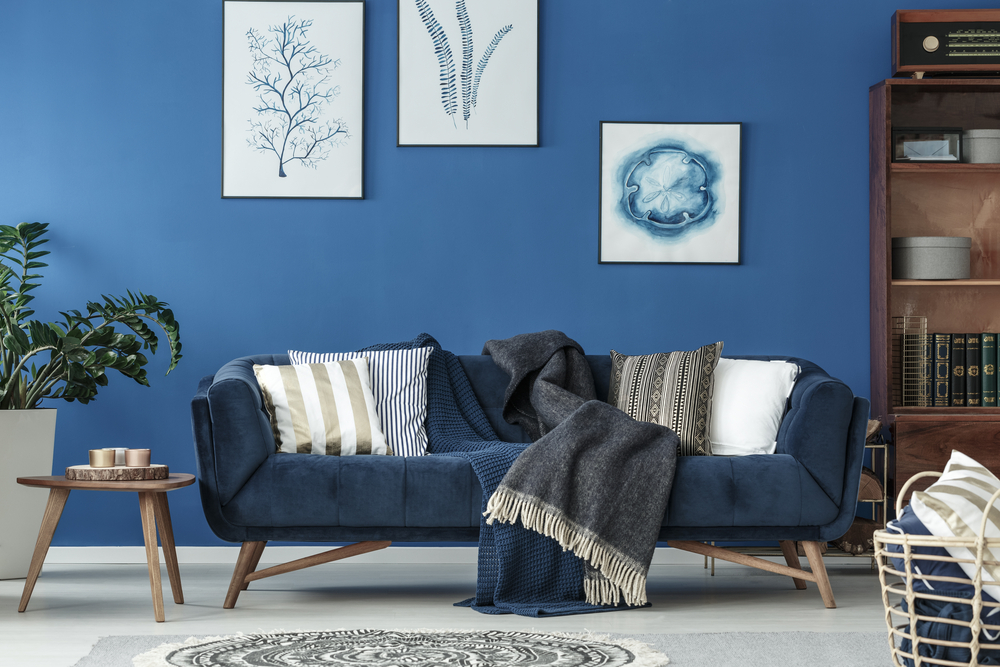
Last but not least, navy blue is another classic and inarguably regal colour choice that’s sure to make your interiors leave a lasting impression. Known for its ability to create a sense of calm and tranquillity, the deep and rich tone of this colour has made it a highly popular shade for statement walls and spaces that are designed to be serene – think studies and bathrooms.
Navy blue walls can serve as a striking backdrop for monochromatic accents. Alternatively, you can use navy blue to put a contemporary twist on existing interior design styles like Hamptons Coastal or other coastal-inspired aesthetics. If you are planning to go down this route, however, remember to balance things out with lighter-coloured walls or accessories to maintain a sense of balance and prevent the space from feeling too dark.
We recommend using navy blue as an accent in coastal-inspired interiors to evoke a delightfully paradoxical sense of delicate depth. And if you are feeling a little overwhelmed by the prospect of having to maintain such a delicate sense of balance, consider using the 60-30-10 colour rule as a guide as you design.
_________________
And there you have it — 7 trending colours and shades to use in your next home design project. Whether you’re looking to do a little interior design adjustment or you’ve got a major home renovation in the works, incorporating these popular hues into your home design can breathe new life into your living spaces and reflect your personal style. So let your creativity shine and use these shades to transform your home into a stylish and inviting sanctuary that’s reflective of you as an individual.

